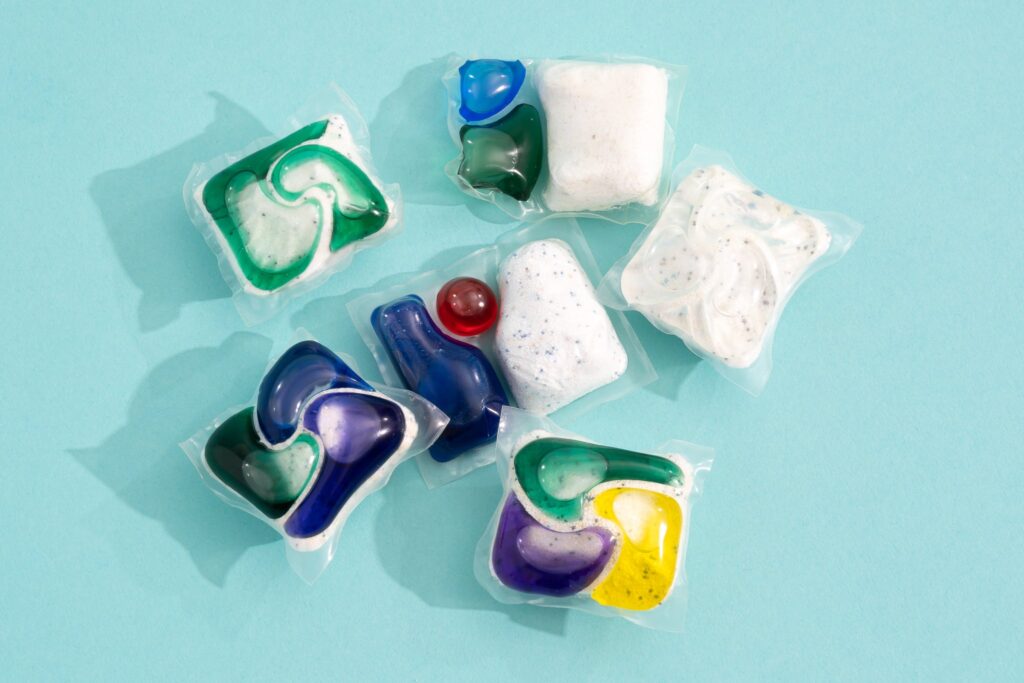Dishwasher detergent is a household staple used to effectively clean dishes and utensils. While it serves a valuable purpose in maintaining cleanliness and hygiene, dishwasher detergent can also pose risks of toxicity if ingested or mishandled. In this article, we’ll delve into the mechanism of dishwasher detergent toxicity, the symptoms and signs to watch out for, what to do in case of ingestion, and essential prevention measures to keep your household safe.
Mechanism of Toxicity:
Dishwasher detergents often contain a combination of chemicals designed to break down food residues, grease, and stains. These chemicals may include surfactants, enzymes, bleach, and other cleaning agents. When ingested, dishwasher detergent can cause irritation and damage to the gastrointestinal tract due to its caustic nature. The alkaline pH of dishwasher detergent can lead to corrosive injuries to the mouth, throat, esophagus, and stomach, resulting in chemical burns and tissue damage.
Symptoms and Signs of Toxicity:

The symptoms of dishwasher detergent toxicity can vary depending on the type and amount of detergent, the mode of toxicity (ingested, inhaled,..etc), as well as the age and health of the individual. According to published research data of Davis and colleagues (1) that included 27066 children less than 6 years that experienced dishwasher or laundry detergent toxicity, common symptoms and signs of detergent toxicity included:
| System | Symptom/sign | Prevalence (%) |
| Gastrointestinal | Vomiting | 18.10% |
| Nausea | 1% | |
| Oral irritation | 1.90% | |
| Throat irritation | 0.20% | |
| Diarrhea | 0.20% | |
| Abdominal pain | 0.20% | |
| Dermal | Erythema/flushed | 0.40% |
| Edema | 0.10% | |
| Rash | 0.2 | |
| Dermal—irritation/pain | 0.3 | |
| Burns (superfi cial) | 0.01% | |
| Neurologic | Drowsiness/lethargy | 1.60% |
| Agitated/irritable | 0.40% | |
| Ocular effects | Ocular—irritation/pain | 0.50% |
| Red eye/conjunctivitis | 0.30% | |
| Lacrimation | 0.10% | |
| Respiratory | Cough/choke | 5.10% |
| Dyspnea | 0.10% | |
| Cardio | Tachycardia | 0.01% |
| Other | Excess secretions | 0.10% |
| Fever/hyperthermia | 0.10% | |
| Bleeding (other) | 0.10% |
What to Do If You or Your Child Had Dishwasher Detergent Toxicity:
If you suspect that you or your child has ingested dishwasher detergent or come into contact with it, it’s essential to take immediate action to minimize the risk of toxicity. Follow these steps:
1-Call poison control or seek medical attention immediately. Provide information about the type of detergent ingested, the amount, and any symptoms experienced.
2-Rinse the mouth with water or milk to dilute the detergent and minimize further irritation.
3-Do not induce vomiting unless directed by a healthcare professional, as this can worsen the chemical burns and increase the risk of aspiration.
4-If the detergent has come into contact with the skin or eyes, rinse thoroughly with water for at least 15 minutes and seek medical evaluation if irritation persists.
Prevention of Dishwasher Detergent Toxicity:
Preventing dishwasher detergent toxicity begins with proper storage, handling, and use of detergent products. Follow these guidelines to reduce the risk of accidental ingestion or exposure:
1-Store dishwasher detergent securely in its original container, out of reach and sight of children and pets.
2-Keep detergent pods and packets locked away in a childproof cabinet or drawer.
3-Use child-resistant packaging and closures for dishwasher detergent products.
4-Educate children about the dangers of ingesting or playing with dishwasher detergent and emphasize the importance of keeping cleaning products out of reach.
5-Always handle dishwasher detergent with dry hands to prevent skin irritation or accidental ingestion.
6-Never transfer dishwasher detergent into unmarked or food containers, as this can lead to confusion and accidental ingestion.
Read also: Can You Put Your Child’s Toys in the Dishwasher? A Guide to Safe Cleaning Methods
Keep Your Child Safe from Detergent Toxicity:
As a parent or caregiver, there are additional steps you can take to protect your child from detergent toxicity and promote a safe home environment:
1-Supervise young children closely during meal preparation and dishwashing activities.
2-Use dishwasher locks or safety latches to prevent children from accessing the dishwasher or detergent dispenser.
3-Teach children to wash their hands thoroughly after handling cleaning products and before eating or drinking.
4-Model safe-handling practices and reinforce the importance of following instructions and warnings on cleaning product labels.
Conclusion:
Dishwasher detergent toxicity is a serious concern that can result in significant harm if ingested or mishandled. By understanding the mechanism of toxicity, recognizing the symptoms and signs, knowing what to do in case of exposure, and implementing preventive measures, you can minimize the risk of detergent toxicity in your household and keep your family safe. Remember to store dishwasher detergent securely, educate children about the dangers of ingestion, and practice safe handling and storage practices to prevent accidents and injuries. By prioritizing safety and awareness, you can create a healthy and hazard-free environment for your family.
Reference:
- Davis MG, Casavant MJ, Spiller HA, Chounthirath T, Smith GA. Pediatric exposures to laundry and dishwasher detergents in the United States: 2013–2014. Pediatrics. 2016;137(5).

